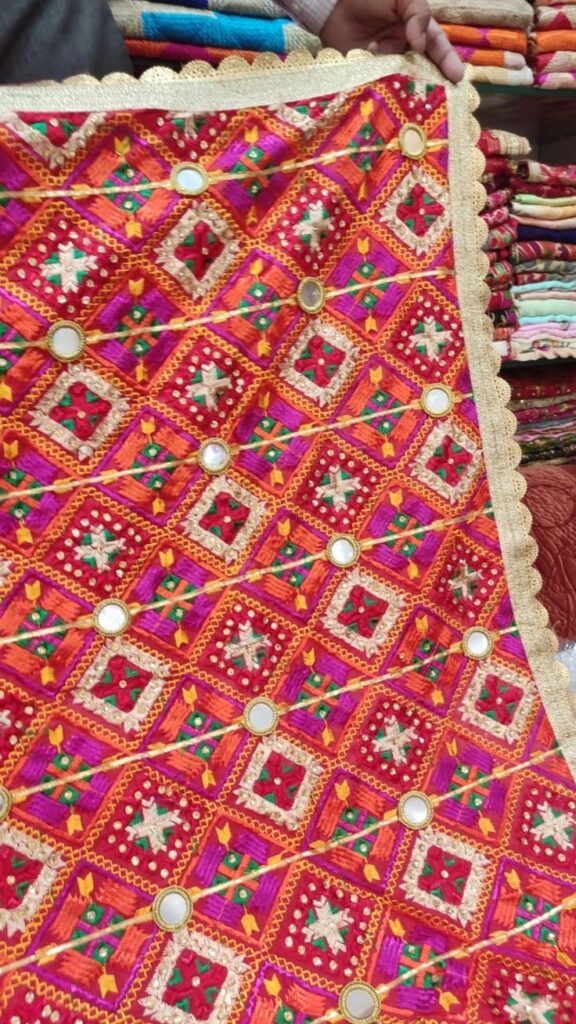Phulkari, the vibrant and intricate embroidery art native to Punjab, holds a cherished place in both Punjabi weddings and broader cultural traditions. Translating to “flower work,” Phulkari is far more than a decorative craft — it symbolizes blessings, prosperity, and the rich heritage of Punjab. This blog explores the enduring significance of Phulkari in Punjabi culture and how it continues to play a vital role in wedding ceremonies.
The Cultural Roots of Phulkari
Phulkari embroidery originated centuries ago in the rural villages of Punjab. Traditionally practiced by women, it involves hand-stitched floral and geometric patterns using bright silk threads on coarse cotton fabric called khaddar. The craft became a symbol of Punjabi identity and an artistic expression of life’s joys and challenges.

In Punjabi culture, Phulkari is a medium of storytelling, with each design and color carrying unique meanings. The motifs often represent fertility, happiness, and the natural world — themes deeply connected to Punjab’s agrarian lifestyle.
Phulkari’s Role in Punjabi Weddings
Punjabi weddings are celebrations full of color, joy, and elaborate rituals, and Phulkari holds a central place in these festivities. It is traditionally gifted to brides by their mothers or mothers-in-law as a token of blessings and protection. A Phulkari dupatta or shawl draped over the bride’s head or shoulders is a common sight in Punjabi weddings, symbolizing modesty, grace, and the bride’s connection to her family heritage.
The embroidery on wedding Phulkari pieces is often more intricate and vibrant, reflecting the auspicious nature of marriage. Wearing Phulkari not only enhances the bridal look but also links the bride to generations of women who stitched these beautiful motifs by hand.
Symbolism and Emotional Value
Phulkari embroidery goes beyond aesthetics — it carries deep emotional significance. It is seen as a blessing for fertility and prosperity, ensuring a happy and successful married life. The act of creating Phulkari itself is an expression of love and care, often done by family members, making each piece a treasured heirloom.
Additionally, Phulkari fosters a sense of community and belonging. Its patterns and colors tell stories about family traditions and cultural pride, reinforcing Punjabi identity across generations.
Phulkari in Modern Culture and Fashion
While rooted in tradition, Phulkari has evolved into a popular element of contemporary fashion. Designers incorporate Phulkari embroidery into modern bridal wear, casual clothing, and accessories, bringing this heritage craft to younger generations worldwide.
Moreover, the revival of Phulkari supports rural artisans, especially women, helping preserve this unique embroidery style and sustain cultural craftsmanship.
Conclusion
Phulkari is much more than beautiful embroidery; it is a living symbol of Punjabi culture and wedding traditions. Its vibrant threads weave stories of love, blessings, and heritage, making it an indispensable part of Punjabi weddings and everyday cultural expression. Whether worn by a bride on her special day or cherished as a cultural artifact, Phulkari continues to celebrate Punjab’s rich history and artistic legacy.